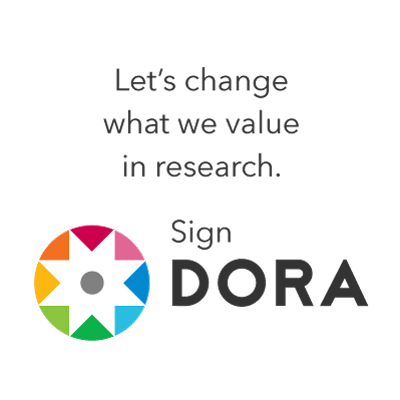Assistive Device for Rehabilitation of Acute-Stroke Upper Extremity
DOI:
https://doi.org/10.33317/ssurj.248Keywords:
Rehabilitation, EMG, Myoware, BlynkAbstract
Stroke is a medical condition that is the fifth cause of death and a leading cause of disability. The different reasons for stroke are high B.P, obesity, smoking, etc. recovery can only be sped up by regular physiotherapy and willpower of the patient. Regular physiotherapy can be interrupted by other commitments of the patient or by the doctor's unavailability. This may lead to a delay in the recovery process. Therefore, the efforts are needed to tackle the problem. The proposed device can be used to monitor and carry out selected exercises advised by the doctor. Here the upper right limb is our focus because it is the most common area to be affected. Furthermore, android application is also designed which have different consoles for doctor and patient. The patient’s app shows the history and progress of the patient while the doctor sets the time and can also see the progress. Firstly, the unit tracks finger and wrist movements and the signal strength of the muscles being exercised, and then performs assisted flexion / extension manipulation of the limb. The results are shown in the app using the graphs so that the patient and the doctor can both monitor the progress. Thus, this design gives ease to the patient as well as the doctor. With the world shifting towards smart devices and remote monitoring and control, there is a need to apply modern technology in the health dept. using the platform of IOT, certain medical treatments can be made easier for the doctors and effective for the patients. By using different sensors, a microcontroller, Arduino software, mobile application, the patient’s physiotherapy exercises can be monitored, recorded and assisted.
References
Sherin, A., Ul-Haq, Z., Fazid, S., Shah, B. H., Khattak, M. I., & Nabi, F. (2020). Prevalence of stroke in Pakistan: Findings from Khyber Pakhtunkhwa integrated population health survey (KP-IPHS) 2016-17. Pakistan Journal of Medical Sciences, 36(7), 1435.
Ambar, R., Ahmad, M. S., Ali, A. M., & Jamil, M. A. (2011). Arduino based arm rehabilitation assistive device. Journal of Engineering Technology, 7(2011), 5-13.
Talbot, K. (2014). Using Arduino to design a myoelectric prosthetic. Honors Theses, 1963-2015.55.
Gamba, M. T., Nicola, M., & Motella, B. (2020, June). Galileo OSNMA: An implementation for ARM-based embedded platforms. In 2020 International Conference on Localization and GNSS (ICL-GNSS) (pp. 1-6). IEEE.
Marchal-Crespo, L., & Reinkensmeyer, D. J. (2009). Review of control strategies for robotic movement training after neurologic injury. Journal of neuroengineering and rehabilitation, 6(1), 1-15.
Konrad, P. (2005). The abc of emg. A practical introduction to kinesiological electromyography, 1(2005), 30-5.
Maceira-Elvira, P., Popa, T., Schmid, A. C., & Hummel, F. C. (2019). Wearable technology in stroke rehabilitation: towards improved diagnosis and treatment of upper-limb motor impairment. Journal of neuroengineering and rehabilitation, 16(1), 1-18.
Takahashi, C. D., Der-Yeghiaian, L., Le, V., Motiwala, R. R., & Cramer, S. C. (2008). Robot-based hand motor therapy after stroke. Brain, 131(2), 425-437.
Wu, J., Huang, J., Wang, Y., & Xing, K. (2010, November). A wearable rehabilitation robotic hand driven by PM-TS actuators. In International Conference on Intelligent Robotics and Applications (pp. 440-450). Springer, Berlin, Heidelberg. [10] Fukuda, H., Morishita, T., Ogata, T., Saita, K., Hyakutake, K., Watanabe, J., ... & Inoue, T. (2016). Tailor-made rehabilitation approach using multiple types of hybrid assistive limb robots for acute stroke patients: a pilot study. Assistive Technology, 28(1), 53-56.
Lucas, L., DiCicco, M., & Matsuoka, Y. (2004). An EMG-controlled hand exoskeleton for natural pinching. Journal of Robotics and Mechatronics, 16, 482-488.
Reinkensmeyer, D. J., Emken, J. L., & Cramer, S. C. (2004). Robotics, motor learning, and neurologic recovery. Annu. Rev. Biomed. Eng., 6, 497-525.
Vanoglio, F., Luisa, A., Garofali, F., & Mora, C. (2013, April). Evaluation of the effectiveness of Gloreha (Hand Rehabilitation Glove) on hemiplegic patients. Pilot study. In XIII congress of Italian Society of Neurorehabilitation (pp. 18-20).
Iwamoto, Y., Imura, T., Suzukawa, T., Fukuyama, H., Ishii, T., Taki, S., ... & Araki, O. (2019). Combination of exoskeletal upper limb robot and occupational therapy improve activities of daily living function in acute stroke patients. Journal of Stroke and Cerebrovascular Diseases, 28(7), 2018-2025.
Iqbal, J., Tsagarakis, N. G., Fiorilla, A. E., & Caldwell, D. G. (2010, September). A portable rehabilitation device for the hand. In 2010 Annual International Conference of the IEEE Engineering in Medicine and Biology (pp. 3694-3697). IEEE.
Maciejasz, P., Eschweiler, J., Gerlach-Hahn, K., Jansen-Troy, A., & Leonhardt, S. (2014). A survey on robotic devices for upper limb rehabilitation. Journal of neuroengineering and rehabilitation, 11(1), 1-29.
Mulas, M., Folgheraiter, M., & Gini, G. (2005, June). An EMG-controlled exoskeleton for hand rehabilitation. In 9th International Conference on Rehabilitation Robotics, 2005. ICORR 2005. (pp. 371-374). IEEE.
Kahn, L. E., Zygman, M. L., Rymer, W. Z., & Reinkensmeyer, D. J. (2006). Robot-assisted reaching exercise promotes arm movement recovery in chronic hemiparetic stroke: a randomized controlled pilot study. Journal of neuroengineering and rehabilitation, 3(1), 1-13.
Saeed, S. (2019). A Conceptual System on Ubiquitous Cardiovascular Health-Care System (UCHS). Sir Syed University Research Journal of Engineering & Technology, 9(1).
Elderneedslaw.com. (2021). Activities of Daily Living and Medicaid Eligibility. Retrieved from: https://www.elderneedslaw.com/blog/activities-of-daily-living-and-medicaid-eligibility.
Javed, S., Javed, H., Saddique, A., & Rafiq, B. (2018). Human Heart Disease Prediction System Using Data Mining Techniques. Sir Syed University Research Journal of Engineering & Technology, 8(II).
Downloads
Published
How to Cite
Issue
Section
License
Copyright (c) 2021 Naveed Shahzad (Author)

This work is licensed under a Creative Commons Attribution 4.0 International License.









